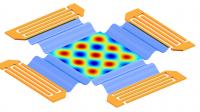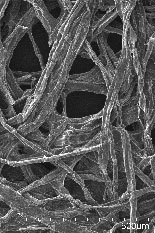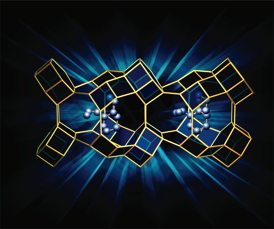Science
Sound waves precisely position nanowires

This image shows a simulation of the electric field distribution in a two-dimensional standing surface wave field.
- Read more
- 420 reads
A Battery Made of Wood? Wood fibers help nano-scale batteries keep their structure

- Read more
- 361 reads
Billion-Pixel View of Mars Comes From Curiosity Rover

This is a reduced version of panorama from NASA's Mars rover Curiosity with 1.3 billion pixels in the full-resolution version. It shows Curiosity at the "Rocknest" site where the rover scooped up samples of windblown dust and sand. Curiosity used three cameras to take the component images on several different days between Oct. 5 and Nov. 16, 2012.
- Read more
- 311 reads
Polymer-coated catalyst protects "artificial leaf"

This complex solar cell is coated with two different catalysts and works like an "artificial leaf", using sunlight to split water and yield hydrogen gas.
- Read more
- 334 reads
The Turbulent, High-Energy Sky Is Keeping NuSTAR Busy

Artist's concept of NuSTAR in orbit. NuSTAR has a 33-foot (10-meter) mast that deploys after launch to separate the optics modules (right) from the detectors in the focal plane (left).
- Read more
- 325 reads
Working backward: Computer-aided design of zeolite templates: Rice scientists apply drug-design lessons to production of industrial minerals

Rice University scientists have created a computational procedure to identify small organic molecules (purple) that can be used to guide the growth of zeolite crystals (yellow).
- Read more
- 363 reads
Discovery of new material state counterintuitive to laws of physics

Pressure-induced transitions are associated with near 2-fold volume expansions. While an increase in volume with pressure is counterintuitive, the resulting new phases contain large fluid-filled pores, such that the combined solid + fluid volume is reduced and the inefficiencies in space filling by the interpenetrated parent phase are eliminated.
- Read more
- 375 reads
Nanoparticle Opens the Door to Clean-Energy Alternatives

A transmission-electron microscope image of a collection of quasi-spherical nickel phosphide nanoparticles. A team led by Raymond Schaak of Penn State University has found that these nanoparticles can catalyze an important chemical reaction that generates hydrogen from water.
- Read more
- 368 reads
NASA's 2013 HS3 Hurricane Mission to Delve into Saharan Dust

A well-defined plume of dust swept across the entire Atlantic Ocean on June 24, 2009. In this photo-like image taken by the Moderate Resolution Imaging Spectroradiometer (MODIS) on NASA’s Aqua satellite in three consecutive overpasses, the dust stretches from its origins in Africa’s Sahara Desert to the Lesser Antilles Islands on the eastern edge of the Caribbean Sea. Such spectacular dust storms are not uncommon.
1.NASA's Goddard Space Flight Center 2.此則是否有版權問題 原址:
- Read more
- 380 reads
Human Rights
Fostering a More Humane World: The 28th Eurasian Economic Summi

Conscience, Hope, and Action: Keys to Global Peace and Sustainability

Ringing FOWPAL’s Peace Bell for the World:Nobel Peace Prize Laureates’ Visions and Actions

Protecting the World’s Cultural Diversity for a Sustainable Future

Puppet Show I International Friendship Day 2020


